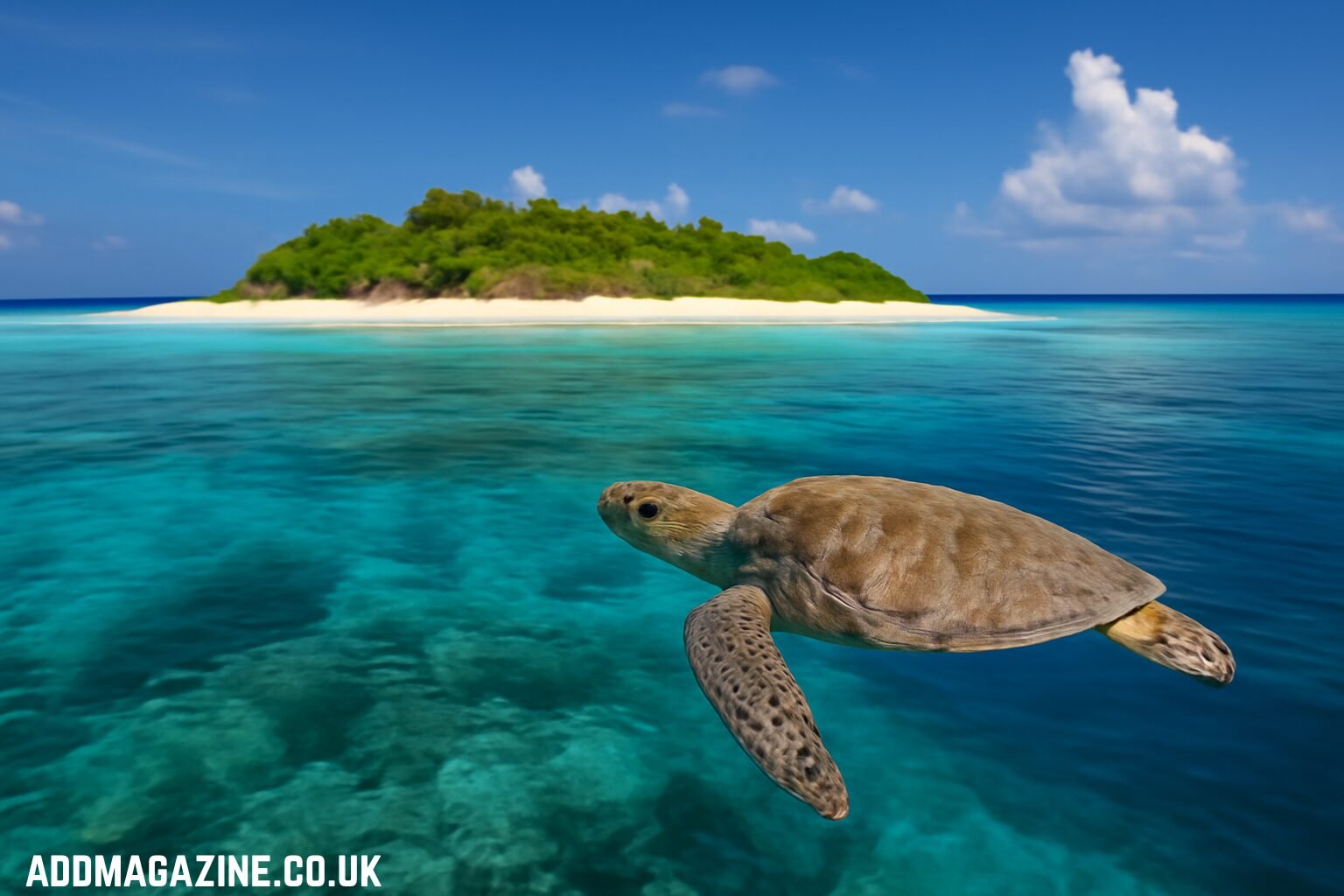The Lucipara Islands are a remote and lesser-known group of islands situated in the Banda Sea, about 200 kilometers south of Ambon in Indonesia. Despite their relative isolation, these islands are home to remarkable natural beauty and a rich diversity of marine life, particularly sea turtles. They are part of Indonesia’s vast maritime heritage and are gaining increasing attention from marine scientists, conservationists, and nature enthusiasts.
Geography and Location
The Lucipara Islands are located approximately 50 kilometers to the west of the Penyu Islands, which are also part of the Molucca Islands group. These islands are nestled just to the south of the Manipa Strait and are surrounded by the crystal-clear waters of the Banda Sea. To the northeast lies Skaro Reef, a popular site among divers for its underwater ecosystems.
One of the most striking features of the Lucipara Islands is their isolation. The islands can only be accessed by boat during certain months of the year when the weather conditions allow. The journey to the islands takes about 15 hours from the nearest major city, Ambon, and is often considered a significant adventure due to the challenging nature of the trip and the limited access to the islands.
Ecological Significance
The Lucipara Islands are well-known for their pristine marine environments. The waters surrounding the islands are home to vibrant coral reefs, making it a sought-after destination for divers and marine researchers. The reefs support an incredibly diverse range of marine life, including various species of fish, sharks, and rays. Additionally, the islands’ waters are a haven for sea turtles, particularly the green and hawksbill species, which have been observed in large numbers around the islands.
In fact, the abundance of sea turtles is one of the primary attractions of the Lucipara Islands. The area is home to one of the most significant turtle nesting sites in the region, with green turtles using the sandy beaches to lay their eggs. Marine researchers have noted that the island’s reefs serve as vital feeding grounds for the turtles, supporting their growth and survival. This has led to discussions about establishing the Lucipara Islands as a marine protected area, to help ensure the long-term sustainability of the marine ecosystem.
Efforts to conserve the Lucipara Islands’ marine biodiversity are gradually gaining momentum. The Indonesian government has recognized the ecological importance of the islands, and conservation initiatives are slowly taking shape. However, challenges such as marine pollution and unsustainable fishing practices persist, making it crucial to continue efforts to protect this fragile ecosystem.
Human Presence and Local Claims
The Lucipara Islands are uninhabited, and no permanent settlements exist on the islands. However, there are occasional visits from local fishermen and families who have traditional claims to the islands. These families, particularly those from Pulau Mai, have historically harvested coconuts from the atoll. Today, they occasionally return to the islands to gather coconuts, a practice that dates back generations.
In addition to the coconut harvest, some local fishermen come from areas like Ambon and Wakatobi to fish in the rich waters surrounding the islands. Tuna and reef fish are the primary catches, and the fishing activities have been an integral part of the local economy for many years. While the islands may not have a permanent human population, the traditional claims and occasional visits highlight the longstanding connection between the people of the region and these remote islands.
A Sanctuary for Marine Life
The underwater environments around the Lucipara Islands are nothing short of spectacular. Divers and snorkelers are treated to an abundance of marine life, including large schools of trevally, barracuda, unicorn fish, and the occasional sighting of juvenile grey reef sharks. The coral reefs themselves are in remarkable condition, with no signs of bleaching despite the rising ocean temperatures that have affected other parts of the world.
One of the most striking features of the Lucipara Islands is the remarkable health of the coral ecosystems. The reefs thrive in the warm waters of the Banda Sea, and the biodiversity is a testament to the relatively low human impact on the region. Visitors to the islands are often struck by the vivid colors of the corals and the wide variety of species that inhabit the reefs. The extensive reef flats, which are accessible to snorkelers, are teeming with life, and sightings of large fish, rays, and turtles are common.
During a visit in 2019, a marine scientist and a group of adventurers recorded a staggering 470 sea turtles during a series of snorkeling sessions around the islands. Green turtles, which made up more than 80% of the sightings, were seen in large numbers. Visitors also observed significant turtle nesting activities on the beaches, with turtle tracks covering the sandy shores at high tide. However, despite the pristine nature of the islands, the researchers also noted the presence of trash in some of the turtle nesting areas, a reminder of the broader environmental challenges faced by even the most remote locations in the world.
A Place for Conservation and Sustainable Tourism
In recent years, there has been a growing interest in promoting sustainable tourism in the Lucipara Islands. The unique natural beauty of the islands and their thriving marine ecosystems make them an attractive destination for eco-tourism. However, the challenge remains to balance tourism with conservation efforts.
The idea of establishing the Lucipara Islands as a marine protected area has been discussed among local authorities and conservation groups. This would help safeguard the coral reefs and the sea turtle populations that depend on the islands’ ecosystems. However, as with many remote destinations, there are challenges in managing the area effectively and ensuring that tourism activities do not negatively impact the delicate balance of the marine environment.
Efforts to raise awareness about the importance of preserving the Lucipara Islands are ongoing. Conservationists are working to educate local communities and visitors about the need to reduce waste, avoid damaging fishing practices, and protect turtle nesting sites. By promoting sustainable tourism and marine conservation, the Lucipara Islands can serve as a model for protecting other pristine marine environments in Indonesia and beyond.
The Future of the Lucipara Islands
The future of the Lucipara Islands remains uncertain, but the ongoing efforts to protect their natural resources are promising. The islands are an important part of Indonesia’s maritime heritage, and their significance extends beyond their stunning beauty and biodiversity. As awareness of the importance of marine conservation grows, the Lucipara Islands may serve as a beacon for the protection of similar ecosystems around the world.
While the islands may never become major tourist destinations due to their remote location, they are poised to play an important role in the global effort to conserve marine biodiversity. By continuing to protect the reefs, turtles, and other marine species that inhabit the area, the Lucipara Islands can remain a sanctuary for generations to come.
The remote beauty of the Lucipara Islands serves as a reminder of the delicate balance between human activity and nature. These islands, with their rich marine life and untouched ecosystems, offer a glimpse into a world that remains largely unspoiled by modern development. Whether as a destination for scientific research, sustainable tourism, or conservation efforts, the Lucipara Islands hold a special place in the natural heritage of Indonesia and the world.
Conclusion
The Lucipara Islands are a hidden treasure in the Banda Sea, offering exceptional marine biodiversity and stunning coral reefs. While remote and largely uninhabited, the islands serve as a sanctuary for sea turtles and other marine species. Efforts to protect this pristine environment are critical, as the Lucipara Islands hold immense ecological value that can contribute to sustainable marine conservation.
As awareness grows about the importance of preserving the Lucipara Islands, they stand as a model for responsible tourism and ecological protection. With continued efforts to safeguard their ecosystems, the Lucipara Islands can remain an untouched haven for future generations of marine life and adventurers alike.




